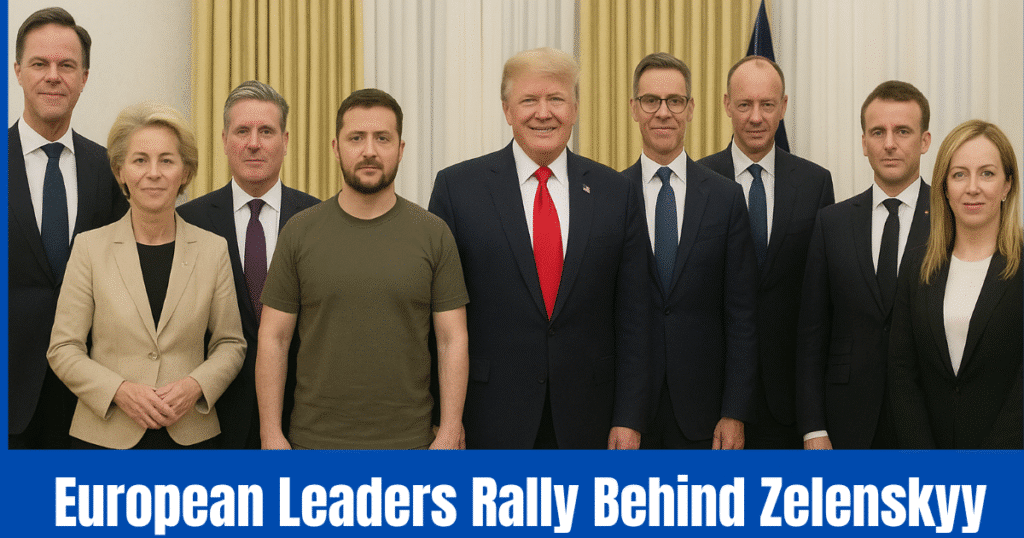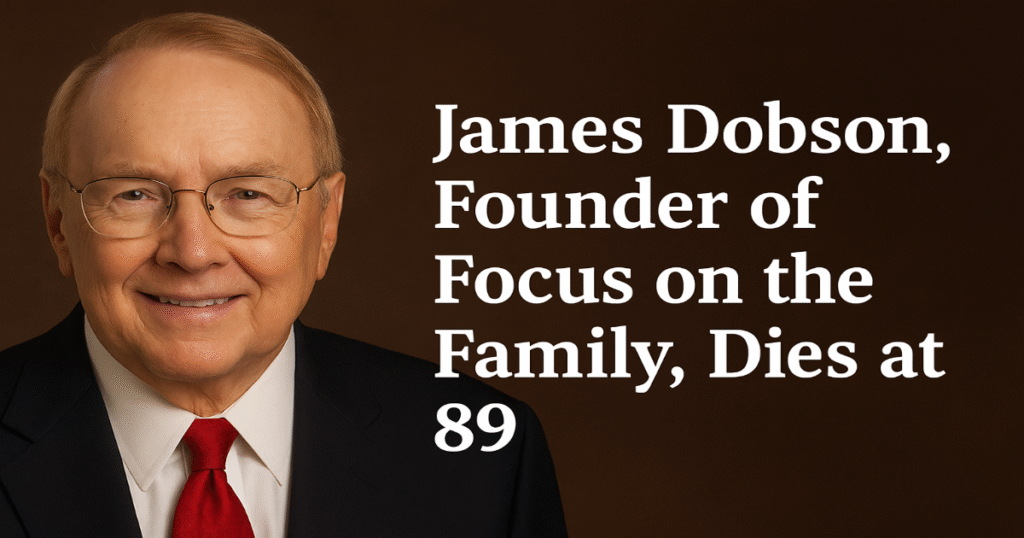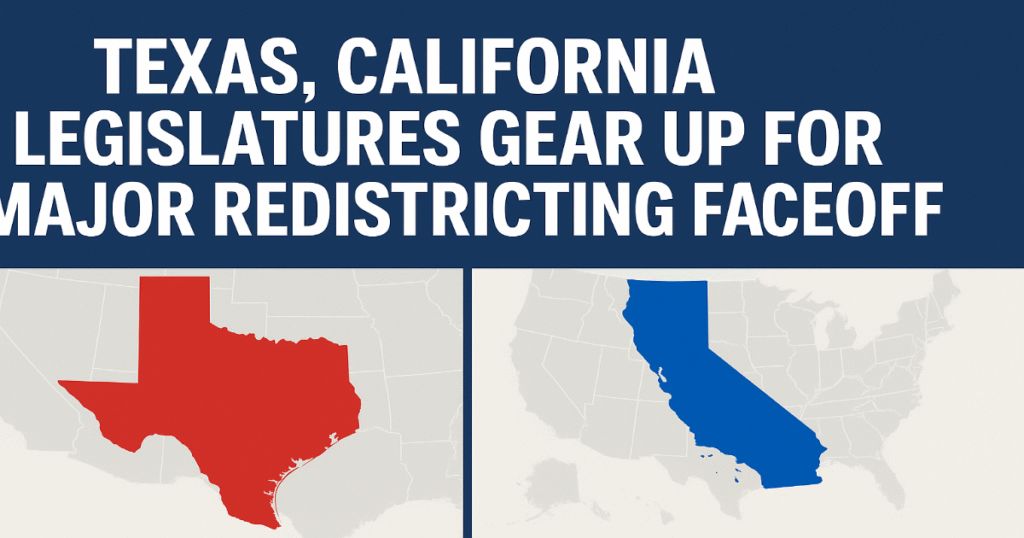Washington, D.C.

On a humid summer afternoon in the U.S. capital, a sea of blue and yellow flags rippled in the breeze just steps away from the White House gates. Dozens of demonstrators, many draped in the Ukrainian trident emblem, gathered with handmade signs demanding stronger American support for Ukraine. Their chants echoed off Lafayette Square as world leaders convened inside the White House, where U.S. President Donald Trump met Ukrainian President Volodymyr Zelenskyy in one of the most closely watched summits of the year.
The rally was modest in size but rich in symbolism. To the demonstrators, standing outside the White House was not just an act of solidarity but also a plea for action. The slogans written on posters and banners — “Arm Ukraine,” “Peace Through Strength,” and “No Deals with Dictators” — cut to the heart of their message: peace cannot be won by compromise with Moscow, but through unwavering Western support.
A Rally Fueled by Urgency and Emotion
The crowd was made up of Ukrainian Americans, human rights advocates, veterans, and ordinary citizens who have followed the war in Ukraine since Russia’s full-scale invasion began in February 2022. Some held candles and photographs of family members still in Ukraine. Others waved small American flags alongside the blue-and-yellow Ukrainian standard, underscoring the bond they believe must remain strong between Washington and Kyiv.
“This isn’t about politics — this is about survival,” said Dmitry Vinogradov, a Russian-born American married to a Ukrainian woman. Standing with his wife, who clutched a framed picture of relatives displaced from Kharkiv, he described the rally as a moral duty. “If the U.S. and Europe fail to stand firm, Russia won’t stop at Ukraine. They will test the whole democratic world.”
Demonstrators took turns speaking through a megaphone, their voices mixing with the noise of passing traffic and tourists. One young woman, a college student whose parents fled Odesa, reminded the crowd that while leaders debate strategy behind closed doors, Ukrainian soldiers are dying daily on the front lines. “Our friends are fighting with broken weapons and limited ammunition,” she said. “We need promises turned into action.”
Inside the White House: A Meeting of Allies, and Tensions
While chants carried across Pennsylvania Avenue, inside the White House the atmosphere was diplomatic, cautious, and layered with political nuance. The meeting between Trump and Zelenskyy — their second of 2025 after a tense encounter earlier in February — was not just bilateral. It was expanded to include leaders from Germany, France, Britain, Italy, Finland, NATO, and the European Commission.
The agenda was ambitious: discussing long-term security guarantees for Ukraine, exploring possible frameworks for a ceasefire or peace agreement, coordinating humanitarian assistance, and finding a way to keep transatlantic allies united in their approach toward Moscow.
Trump, known for his unpredictable style, struck a more measured tone this time. In opening remarks, he called Ukraine “a brave nation defending its people against aggression” and praised European partners for “showing up in strength.” Yet his words also hinted at an appetite for negotiation, even mentioning the possibility of a future trilateral summit with Russian President Vladimir Putin — a suggestion that immediately raised eyebrows among European leaders.
Contrasts Between the Street and the Summit
The juxtaposition could not have been sharper. Outside, demonstrators warned against appeasement. Inside, diplomats weighed scenarios that could involve territorial compromises or phased ceasefires. Zelenskyy, seated beside Trump, was firm in his stance: Ukraine would not accept any deal that sacrificed sovereignty or legitimized Russia’s occupation.
German Chancellor Friedrich Merz urged caution, suggesting that even a temporary ceasefire could save lives while broader negotiations continued. Trump, by contrast, floated the idea of a “comprehensive peace arrangement” that could involve difficult concessions but, in his words, “end the bloodshed once and for all.”
For the demonstrators outside, such talk was deeply unsettling. “A ceasefire without justice is just a pause before the next war,” one speaker declared through the megaphone, earning cheers from the crowd. “Every compromise at Ukraine’s expense rewards Putin.”
Echoes of Past Strains
Monday’s meeting carried added weight because of the rocky history between Trump and Zelenskyy earlier this year. In February, an Oval Office encounter ended abruptly after heated disagreements, with Trump publicly criticizing Zelenskyy and temporarily freezing U.S. military aid. That episode rattled Kyiv and frustrated European allies, who feared cracks in Western unity.
Although the aid was reinstated weeks later, scars remained. Ukrainian officials privately worried that Washington’s reliability as Kyiv’s strongest backer had been shaken. For protesters outside the White House, this background made their rally even more urgent — a visible reminder that public opinion can still push leaders toward firmer commitments.
Voices from the Crowd
The diversity of the demonstrators highlighted the depth of support for Ukraine across communities.
- Nadia Morozova, a second-generation Ukrainian American from New Jersey, said her grandparents fled Soviet repression in the 1950s. “I never thought I’d be here, decades later, still fighting against the same Russian imperialism they escaped,” she said tearfully.
- James Carter, a U.S. Army veteran who served in Iraq, explained why he joined the rally: “Ukraine’s fight is our fight. If democracy falls there, it’s a signal to every authoritarian out there that the West is weak.”
- Olena Kovalenko, a nurse from Chicago, held up a sign that read “Weapons Save Lives.” She explained: “I’ve treated wounded Ukrainian soldiers when I volunteered abroad. The difference between having modern equipment and not having it is literally life and death.”
The rally was not confrontational; police kept watch but did not intervene. Tourists paused to take pictures, some joining the chants. Others walked by silently, but the presence of flags and slogans ensured the message reached far beyond the square.
The Global Stage and Its Uncertainties
The rally was just one small scene in a global drama playing out between Kyiv, Washington, Moscow, and European capitals. While Zelenskyy worked to secure firmer commitments inside the White House, Russian forces continued their grinding offensive in eastern Ukraine. On the same day, reports emerged of heavy shelling near Donetsk and renewed drone strikes targeting Ukrainian cities.
European leaders stressed unity, with NATO Secretary General Mark Rutte calling the White House meeting “a demonstration of shared resolve.” But behind the smiles, differences lingered. Some leaders feared Trump’s overtures toward Putin could weaken Western leverage. Others worried that fatigue among Western publics could erode long-term support for Kyiv.
What Comes Next?
As the meeting concluded, Trump told reporters he would “soon” be speaking directly with Vladimir Putin, a statement that drew swift reactions. Zelenskyy, in his own remarks, tried to strike an optimistic tone, emphasizing that discussions had been “detailed and constructive,” while reiterating that Ukraine’s sovereignty was not negotiable.
For the demonstrators outside, the day ended with a candlelight vigil. They lit candles in honor of Ukrainian soldiers and civilians killed since 2022, singing the Ukrainian national anthem softly as evening descended over Washington. The crowd slowly dispersed, but their message remained clear: the fight for Ukraine’s future is not only taking place on distant battlefields or in gilded meeting rooms, but also in the hearts and voices of ordinary people determined to keep the issue alive.
Final Reflection: A Rally Around Democracy
The rally near the White House may have been small compared to the massive protests that defined other eras of U.S. foreign policy, but its symbolism was powerful. It underscored how grassroots movements can amplify the urgency of geopolitical decisions. For those who gathered, the equation was simple: arming Ukraine equals saving lives, and peace built on strength is the only real peace.
As Trump and Zelenskyy continue their uneasy dance of diplomacy, the rally served as a reminder that public opinion cannot be ignored. Democracy, after all, is not only debated in high-level summits but also expressed through the voices of citizens on the street.
And on that summer day in Washington, those voices carried Ukraine’s hopes straight to the gates of power.
Also Read: Can You Define America’s Culture by Its Cuisine?
Visit: Cheapest Sale

Hey I am Srimanta Pradhan brings 10 years of experience to News Broadcast and Marketing, specializing in effective communication.A specialized content writer with a decade of expertise crafting compelling narratives for News Broadcast and Marketing. Transforms complex information into engaging, impactful content.




















